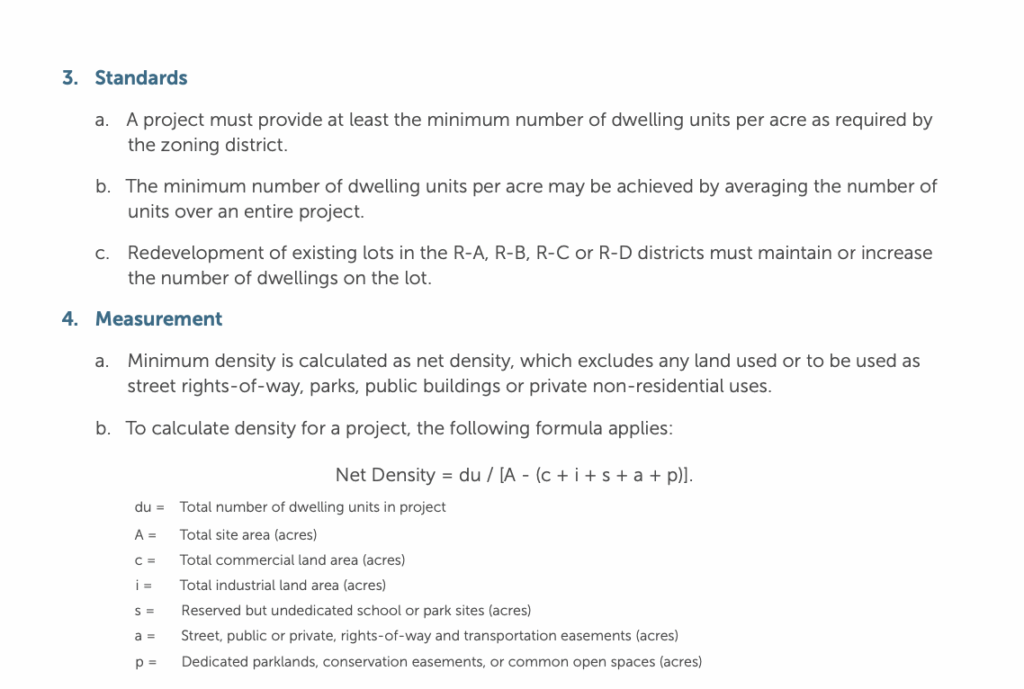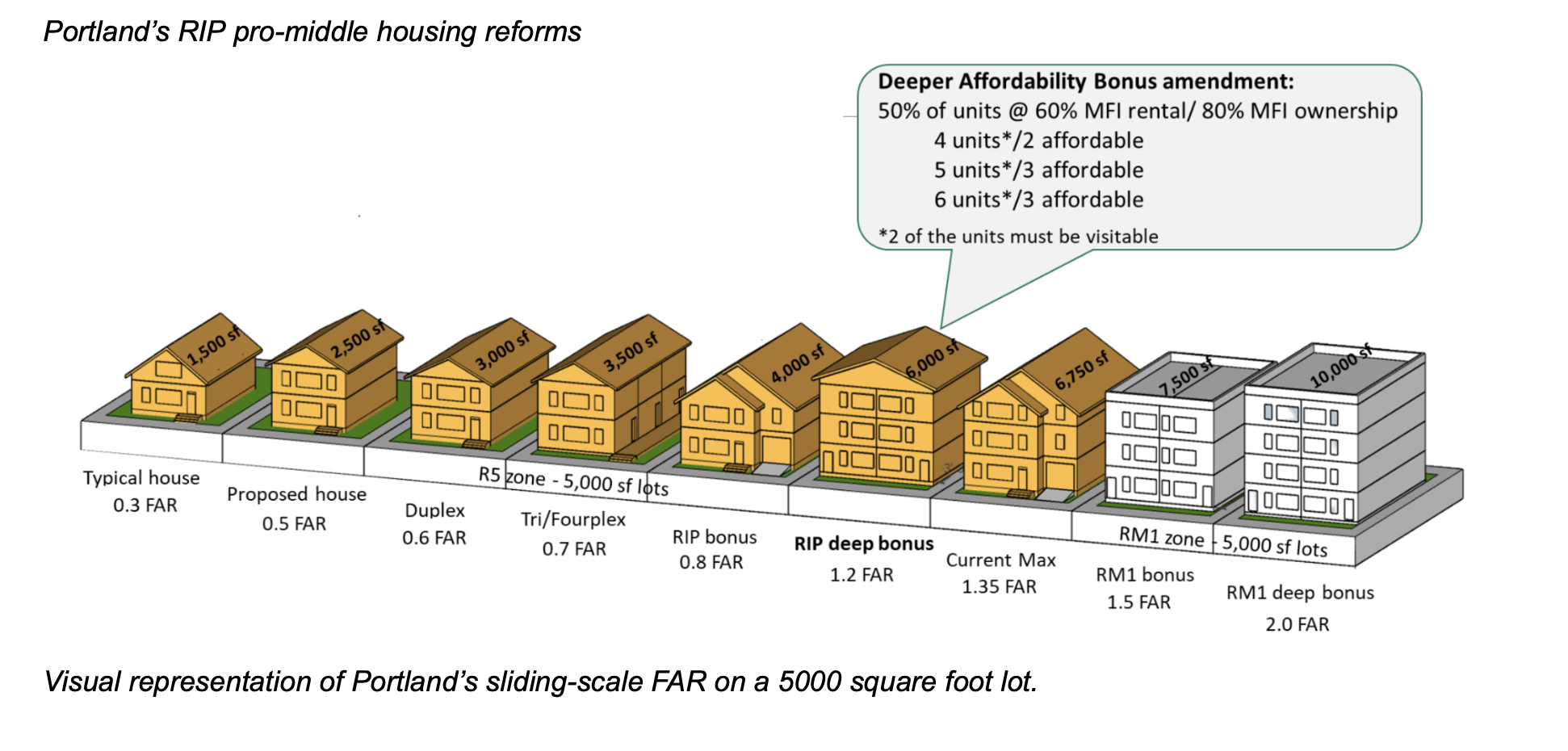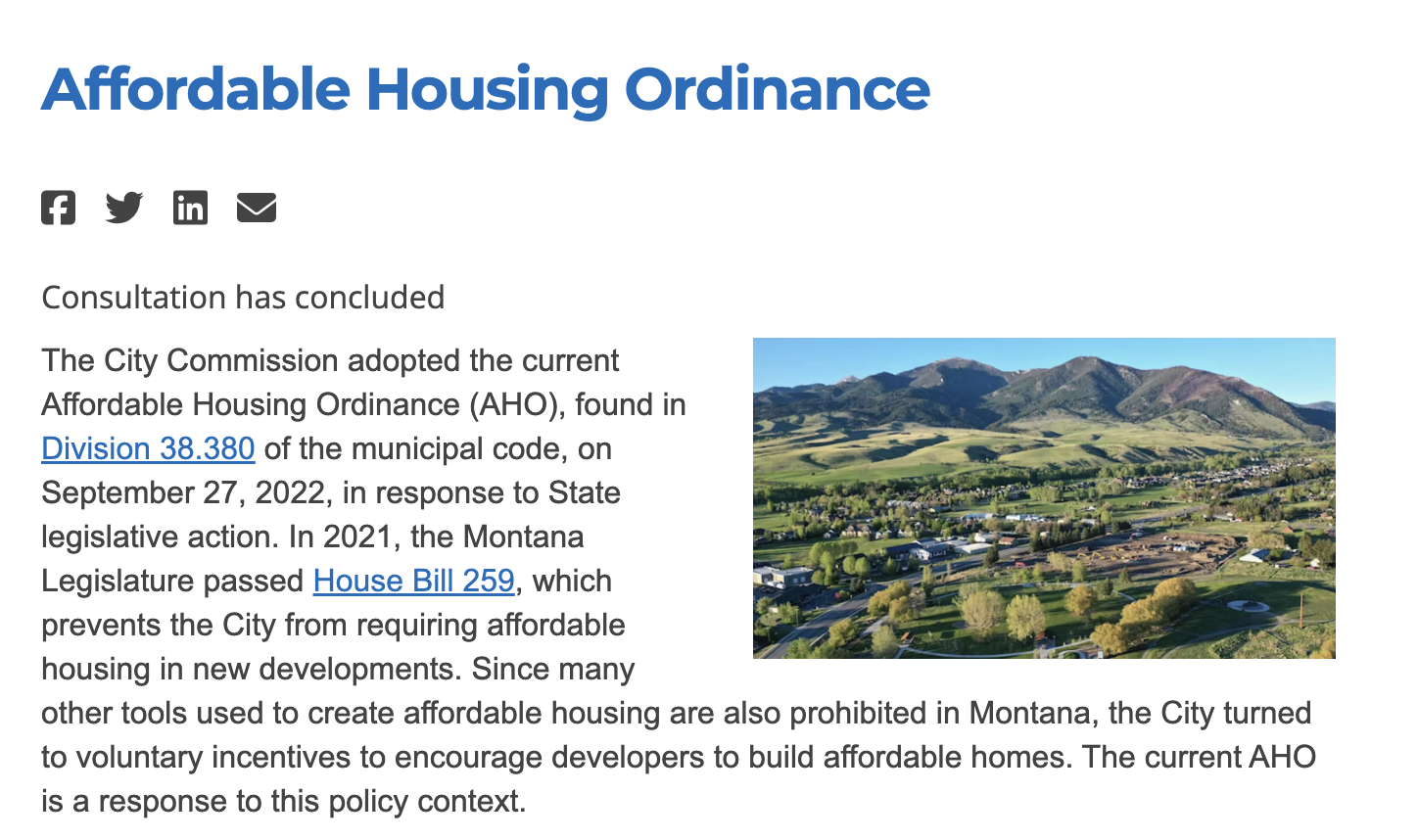Pro-Density vs. Pro-Freedom: A Look at Bozeman’s Zoning Updates
"The problem isn’t that government is picking the wrong types of housing – the problem is that government is trampling on property rights and making choices that should be left to Montanans."
Over the last five years, Frontier Institute has charted the course for what it looks like to be a right-of-center organization working on housing policy. While many others push government-centered solutions, we’ve offered a clear alternative: putting property rights and freedom at the center.
We start with a simple, yet profound belief: human beings have inherent dignity and worth, and with that comes self-ownership. That means you own your time, your labor, and the property you earn. Property rights are the legal foundation that protects self-ownership in practice. They ensure government stays in its proper role: protecting freedom, not deciding how people live. When property rights are undermined, the consequences ripple outward in every direction.
Excessive zoning regulations are one of the most common ways government infringes on property rights today. Rather than simply protecting health and safety, these rules often go much further, dictating nearly every aspect of how you can use your own property. The consequences? Just look at the housing crisis.
Land use and zoning regulations have:
- made many of the most affordable types of housing impossible to build
- raised the costs of homes that do get built
- artificially constrained the housing supply, leading to shortages and further rising prices
While many groups push competing solutions, our approach stands apart: we support strengthening property rights, whether it’s someone in town wanting to use their property or someone outside of town.
In contrast, many so-called “Pro-Density” advocates want to mandate apartments in cities and restrict homes outside of them. Sure, we may agree that someone should be allowed to use their property for infill, but we draw the line when government dictates whether that infill must be an apartment or a single-family home. The same principle applies outside city limits. See the difference? Their goal is density. Our goal is freedom through strong property rights.
Still confused? Let’s turn to my town of Bozeman to unpack the differences.
Background on Bozeman
For context, Bozeman has been in the process of performing a zoning code update since 2020. This includes a variety of zoning updates, such as a complete rewrite of the primary zoning regulation document known as the Unified Development Code (UDC) and a policy known as the Bozeman Affordable Housing Ordinance (AHO).
We were generally supportive of Bozeman’s September 2023 UDC update draft as it was a big improvement over the current UDC, relaxing zoning regulations across the board. However, it does continue some harmful zoning practices that we do not support, and in some cases are in fact the opposite of what we advocate for. Let’s break down some of the key points so we can see how they stack up against our limited government, free market perspective.
- Minimum Density Requirements
Bozeman’s UDC proposal includes new minimum density requirements for every zone that has a “residential component.” These requirements set the lowest number of housing units that must be built per acre. For example, the R-C zone requires at least 18 units per acre, and R-D requires 24. In effect, this means anyone building homes in these areas will be required to prioritize density, whether they want to or not.

Our Take: This is a classic case of solving one zoning problem by creating another. For decades, zoning laws made it illegal to build too many units. Now Bozeman wants to make it illegal to build too few, regardless of if a property owner wants to build fewer. That’s not freedom, and it’s not smart policy. It replaces one-size-fits-all restrictions with a new one-size-fits-all mandate, rather than simply getting out of the way and letting Montanans decide what to build. - Graduated Square Footage Cap
While the current proposed UDC does not include a Graduated Square Footage Cap (GSFC), the concept has been discussed by city leaders after several groups proposed it. The idea is modeled after Portland’s sliding-scale Floor-Area-Ratio system, which effectively sets a maximum square footage for a home and only allows additional space if more housing units are included. Similarly, the GSFC proposal would limit how large a home can be unless the developer adds more units or pays the city in lieu of doing so. The result is a policy that effectively forces property owners to build multifamily units instead of single-family homes, regardless of what the property owner actually wants.**Note: City discussions have also referred to this idea as a “Graduated Floor-Area Ratio” due to Portland’s use of a similar term, though in this context both terms describe the same underlying policy proposal.
Our Take: This is a textbook example of a Pro-Density approach to housing. Rather than letting property owners decide what to build based on what Montanans actually want, this proposal wants to use government to control the outcome. That is the opposite of the property rights approach we take. Government should not be in the business of dictating what kinds of homes people can build on their own property. Furthermore, we should also be extremely cautious about importing ideas from Portland–the city that created an Urban Growth Boundary that has stripped individuals of even their most basic property rights. We should lead with freedom and reject proposals like this.
- Affordable Housing Ordinance
Earlier this year, Bozeman adopted a revised Affordable Housing Ordinance (AHO). The revised AHO creates a system of so-called “deep incentives,” in which developers receive reduced zoning requirements in exchange for setting aside a percentage of units as income-restricted housing, or alternatively, pay into Bozeman’s Community Housing Fund instead of providing those units.
Our Take: We generally support well-designed incentive programs – with an emphasis on well-designed. The problem is that many incentive programs aren’t well-designed because they still rely on government control, just by a different name. This allows them to be applied unevenly across housing types, picking winners and losers until the government’s preferred outcome is achieved. Worse yet, these programs admit that excessive regulations are driving up housing costs, but instead of fixing the root problem, they offer relief only to those who comply with government conditions and require payment from those who don’t. Government should focus on removing unnecessary regulations across all housing types so that everyone can benefit from lower costs and increased supply.
A Better Alternative
Montana’s housing crisis didn’t appear out of nowhere. It is in part due to years of government policies that restricted the housing supply and increased the costs of homes that did get built. While Bozeman’s recent changes may be well-intended, they continue this pattern by keeping government in the driver’s seat by using complex incentives, mandates, and trade-offs that pick winners and losers.
These types of Pro-Density policies are flawed because they draw the wrong conclusion. The problem isn’t that government is picking the wrong types of housing – the problem is that government is trampling on property rights and making choices that should be left to Montanans. Government shouldn’t be deciding whether someone ought to build a townhome, apartment, or single-family home. Montanans should be free to make that choice for themselves, without being steered by policies designed to manipulate outcomes.
The default should be: it’s your property, and you can use it as you see fit, so long as you’re not causing real, demonstrable harm to someone else’s rights. Government intervention should be limited to legitimate concerns for health and safety, and even then, it should intrude on property rights as little as possible. That standard should be the norm, not the exception.
That’s the core of our approach: less government control, stronger property rights, more freedom. I think that’s something all Montanans can get behind.
